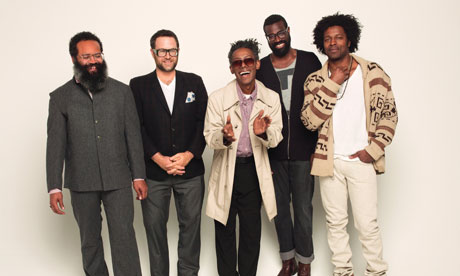Social Media: It’s The Thought That Counts
September 22nd, 2013We’ve spoken a lot in class about how social media can be used to better connect with consumers and it’s increasingly important role in damage control and maintenance of brand image. One area of discussion that I believe has been noticeably under considered is the way in which companies are using social media to reach out to new consumers. We did touch on the way social media can be used for promotional purposes but this obviously is only applicable when the company is actually running a promotion. How can social media be used to fill the downtime between promotional campaigns in such a way that draws new consumers?
 Everyone familiar with twitter will be aware of the daily promoted tweets that appear on your feed. They’re blatant, in-your-face marketing ploys that I argue fall short of the intended purpose of marketing over social media. For people ages 16-25 (the demographic to which I personally belong) these promotional tweets are invisible, the orange logo that identifies the tweet as promoted immediately results in the content of the tweet being wholly disregarded. Marketers spend money to have their tweets promoted, money that is wasted because of its ineffectiveness. There are undoubtedly better techniques that can be employed for free.
Everyone familiar with twitter will be aware of the daily promoted tweets that appear on your feed. They’re blatant, in-your-face marketing ploys that I argue fall short of the intended purpose of marketing over social media. For people ages 16-25 (the demographic to which I personally belong) these promotional tweets are invisible, the orange logo that identifies the tweet as promoted immediately results in the content of the tweet being wholly disregarded. Marketers spend money to have their tweets promoted, money that is wasted because of its ineffectiveness. There are undoubtedly better techniques that can be employed for free.
Smart marketers engage their target demographic on twitter by joining in on the conversations that group cares about. Following hashtags that are gaining interest and replying to celebrities allows marketers to exploit an already buzzing topic for brand promotion. The subtlety of being a commenter in an already existing stream of replies boosts the chances that your message will get read a considerably. Of course you can’t just jump into a conversation about the MMVAs and yell “buy one get one and subway!”, there needs to be some sort of relevance. My favourite example comes from Burger King, I actually favourite the tweet. Shortly after the “Red Wedding” episode that had Game of Thrones fans blowing up on twitter they posted something like this: “The king of the north may be gone but there will ALWAYS be one king of burgers! #GofT”. Using humour to reach the 16-25 demographic is something that is heavily employed in macro-marketing (think Old Spice and Mio) and has proven effective. Clever tweets like the one mentioned above are a way of incorporating an effective marketing strategy and making sure your message actually reaches your audience.
Comm 464
September 12th, 2013This post marks the official start of my final year of UBC blogging. Below this post is all content I’ve written for other classes (including Comm 101 if you care to dive that deep).
Sometimes You Just Gotta
November 29th, 2011The blog i want to talk about in this post is in itself a perfect example of the four P’s in practice. I’m talking about the music super-blog gottadancedirty.com. GDD, as I will refer to it from here on in, is a blog made up of a group of djs from LA that has established an international following in the electronic dance music community. As a blog, GDD applies the four P’s in a non-traditional sense as it is after all, not a traditional business. First of all you have to look at product, GDD provides downloadable mixes, compilations, and tracklists as well as a small selection of branded clothing. The blog relies on a reputation for having the latest releases and the best selection of new music to attract and retain “customers”. Those quotation marks are especially appropriate because as far as price goes everything but the clothes are free, definitely not a business in the traditional sense of the word. 
The biggest aspect of GDD’s “business” is the promotion they do for their blog. The djs behind GDD both play and run huge events in LA that both promote the blog and provide a major source of revenue. By booking major artists for their events they build up a brand association with fans as well as profiting based on attendance. Lastly, place, besides promotion in LA there really isn’t one. GDD is an entirely online service which allows to capture such a large market, it’s available to anyone with the right interests and a computer.
TV on the Radio
November 29th, 2011Ok, so maybe the title I chose is a little miss leading but the band is fantastic so I decided to stick with it anyway. “You mean this wont be about the alt-rock supergroup behind Return to Cookie Mountain?”, yes, that’s exactly what I mean. This post is actually in response to Kazandra Pangilinan’s post about marketing on the radio. She talks about the numerous techniques markets apply to communicate their message without visual aid. Some obviously do this more effectively than others but we won’t go into the finer points of audio theatrics here.Kazandra argues that companies must perceive these ads as being successful on the grounds that they appear to draw a continual investment from them. But how effective of a medium is radio really?
Realistically the only time i listen to the radio (voluntarily) is in the car, and that’s because my car is too old to have an auxiliary audio input. As products like the iPhone and services like internet radio broadcasting have gained popularity the noises filling the air around (and in) our ears have changed. The greggman blog goes into detail in the article The Death of Radio about how podcasts and other mediums that weren’t available in the past can now be made by anyone with a computer. Radio will undoubtedly continue to exist well into the future but does this mean companies should continue to pour money into marketing across a medium with a dwindling audience? I think it is definitely time companies reconsidered the way radio advertising is handled. Perhaps sponsoring a radio program rather than interrupting it? Who knows.
One More Time!
October 31st, 2011It’s a halloween blogging extravaganza! Yup, two posts one day, setting precedents and taking names is what were all about in this blog. And today were taking Robert Hall’s name off the list of classmate’s blogs and talking about his post on the importance of brevity in modern marketing. Rob argues that because the advertising industry is over saturated as it is consumers have grown accustomed to tuning out an advertisement literally within seconds of becoming aware of it. Rob advocates not for increased grandeur or pizzaz in advertisements but rather making those first few seconds where your audience is actually paying attention as dramatic and attention-grabbing as possible.
I have to totally agree with Rob on this one from both a personal standpoint and on principle. I know from first hand experience that I will not care the second an ad starts. Its a preconditioned in me. That said it’s this preconditioning that creates a crucial opening for markets. Expectations are zero, if your ad opens with a car-crash all of a sudden the passive, half-perceptive viewer is now captivated and dare I say could even be interested in what is said/happens next. It doesn’t even have to be as dramatic as that though, point in cases the 2009 Miller Superbowl ads, here’s a compilation of all of them.

Also remember how expensive superbowl advertising is? Why not cut that $15 million spot into 30 separate pieces?
Talk to Me
October 31st, 2011So this may be beating a dead horse here but I’ve always gone with a better safe than sorry policy when it comes to zombies. How often does it feel like those sons of guns just seem to get up after the main character has “killed” them in movies? Semi-effective analogies aside though I wanted to write this post about information gathering and modern marketing. In class I feel like we have often demonized information gathering as giant vulture-like corporations preying on the unsuspecting consumer mice. But what about the benefits?
Information gathering is a two way street and if anything can be said about the certainties of modern marketing it’s that you know the companies are listening. So why not use this information gathering as a consumer tool as well. I see information gathering as an outlet for consumers to voice their opinions about what they would like to see from companies and influence retail outlet locations. Information gathering is after all a strategy for companies to create more personalized effective marketing campaigns so why should it be a game of cat and mouse instead of an open dialogue. If you’re a serious consumer there are benefits to be reaped from voicing your opinion.
Keeping Up the Hype
October 10th, 2011Let’s say you’re coming off what could’ve been one of the biggest box-office releases of the last decade, you’ve just created what’s sure to be a pop culture icon for years to come, and now you’re thinking how am I going to top this? Well if any of thats true you’d probably be Chitopher Nolan about a month after the release of The Dark Knight, the second installment in Hollywoods latest re-vamped Batman movies. Plans have already been laid for a third film but how could it surpass the last? All the conditions were perfect for a classic, excellent writing, low expectations as a result of the first installment in the series, and the tragic death of Heath Ledger making The Joker the final character he’d ever portray. Batman 3 seemed like a daunting task. Now I’m not here to make predictions about the quality of the film but I am here to write about how Christopher and his PR team have definitely started off on the right foot with hyping up The Dark Knight Rises.
Early in the Summer Warner Bros. launched the official Dark Knight Rises website which originally consisted of (much the public’s confusion) a blank webpage and an audio file of people shouting. You couldn’t help but think “Why isn’t my internet working? What do I have to download to see this webpage?”, and right there it’s evident just how brilliant this ad campaign was. You were thinking and you were intrigued. Where’d you go from there? A quick Google search would take you to the movies twitter and then eventually a massive collage image of the new villain Bain. You put in the time and effort (little as it was) and this felt like you’d just stumbled across something big. Discreet is exciting, I know I told my friends.
More for Less? Depends…
October 3rd, 2011
The modern consumer market is so saturated with brands, advertisement, and alternatives that shopping can almost feel like putting together a stock portfolio at times. You’re investing your image in a brand each time you chose to consume a product, you’re associating yourself with that brand and consequently that brands image. Ironically in most markets that brand’s image is determined based on the sort of people that would purchase said product. By extension then it stands to reason that associating yourself with a brand you are also identifying with a social group. The simplest example of this is the apparel market because when you buy apparel you are directly effecting your outward appearance which dictates people’s first perceptions of you as a person.
This is why in a modern market companies stand to benefit greatly from maintaining a perception of quality. Regardless of all the four factors effecting purchasing people are always looking for quality products, in most cases the only thing that effects this is price. It all depends on utility, quality or money saved. How can a modern business capture both markets, the thrifty and the people looking for the best of the best. It the age old quality-for-less conundrum and aside for the age old we’ll-just-turn-into-a-massive-chain mentality some companies are finding ways of doing it (or at least making consumers believe they are).
Companies like KidRobot, an apparel company, do it by offering a limited number of a certain product while maintaining a a low price. By limited quantity I mean there will only be 150 made of a certain model, ever. This means that despite the low price consumers will perceive a much higher quality in the product they are purchasing because of its scarcity. Using exclusivity to attain a larger market, who’d have thought?
Continuing Class Discussion
September 26th, 2011The internet has changed exponentially over the last decade, global connectivity, smart phones, and the ever increasing processing capabilities of consumer computers have been driving factors in shaping the electronic online landscape. What was once considered the “new wild west” circa 2003 has become Big Brother’s favourite information super-encyclopaedia… or at least so it may seem. No this post will not be about the cyber-police, the ethics of illegal downloading, or hacking, no today I’m writing about anonymity, the internet, and what both of them have to do with modern marketing.
When you talk about online marketing nowadays it seems almost unavoidable that the conversation will eventually turn to social media and corporate information gathering. All the major social media websites engage in this; it’s they’re lifeblood and they need it to maintain operations (servers aren’t cheap and Facebook had 30,000 of them by 2009…). Of course to use these sites you must allow them permission to do this and regardless of any qualms we may have with surrendering our privacy the majority of us (800 million Facebook users anyway) will. The information we sign over is invaluable data for marketing firms who use specialized online advertisement to genuinely entice people based on they’re interests. Even your Google searches are logged and tracked through your computer’s IP address.
How can the savvy consumer maintain anonymity? Well like everything on the Internet you can do it for free but you have to be persistent. First of all the only thing social media sites ever require from you is an email and you can generate as many free accounts as you like on Gmail. There are also free programs like Tor that generate a new IP every time your computer accesses the Internet. So want your privacy back from ruthless marketers? Google it, at least that way they’ll know what you want.![]()



